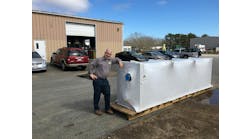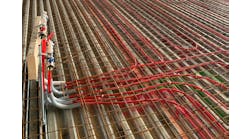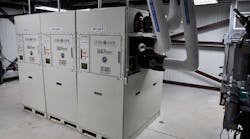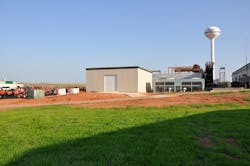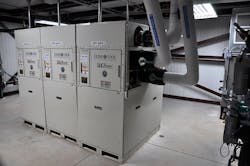In the late 1940s, 28-year-old Ed Malzahn applied a combination of knowledge from his father’s blacksmith business and his degree in mechanical engineering to produce a machine that would revolutionize the underground construction industry as we know it today.
At the time, Mazlahn was paving the way for compact trenchers that now efficiently install water, sewer and gas lines, telecommunications, CATV and fiber optic cables. Malzahn’s original Ditch Witch Power, the first in a long succession of trenching equipment, launched a more than 60-year history for Perry, Okla.-based The Charles Machine Works Inc. (CMW), as well as its leadership in manufacturing Ditch Witch branded equipment used in construction projects worldwide.
True to its longstanding reputation for innovating cutting-edge utility construction solutions, CMW has recently developed horizontal directional drilling (HDD) equipment, which is being used in the growing geothermal industry.
Rising fuel costs and an elevated interest in renewable energy technologies have made geothermal heating and cooling a more popular HVAC industry choice in recent years, particularly in relation to the exceptional comfort and long-term energy savings it can provide.
The company is not only innovative in its product development, but has exhibited an ongoing commitment to incorporating the latest construction technologies and methods into the design of its expanding Perry headquarters campus.
This has included three geothermal projects over the past 21 years –– a 45-ton system for its 14,000-sq. ft. training center in 1992, a 160-ton system for its 30,000-sq. ft. electronics building in 1997 and, most recently, a 150-ton system for its 28,800-sq. ft. product development center in the spring of 2012.
“As a company, we’ve made a living out of serving the underground construction industry, and to stay on top of the latest trends and understand the newest innovations, we figure there isn’t a better way than to install them at our own facilities,” says Tony Guinn, plant engineer for CMW. According to Guinn, he and others at the company initially familiarized themselves with geothermal system concepts via relationships with nearby Oklahoma State University, where the International Ground Source Heat Pump Association (IGHSPA) is headquartered.
“IGSHPA is leading the charge in creating a global awareness of geothermal’s benefits, and the organization was a great resource for us in learning how and why to incorporate these systems into our building projects and upgrades on the campus,” Guinn says.
CMW worked with Stolhand Heating & Air Conditioning to design its latest geothermal project, a retrofit of the existing product development center. Darrell Stolhand, president at Stolhand Heating and Air, first installed residential geothermal systems in the early 1980s, and last year alone his company installed several hundred systems, over half in commercial applications.
Stolhand attributes the recent rise in commercial demand to tax credits and the growing recognition that exceptional energy efficiencies also can be achieved on large-scale projects.
“These days, manufacturing is so competitive, operators need every advantage to keep costs down, and they require equipment that is durable and lasts a long time,” says Stolhand. “Geothermal systems allow manufacturers to save money on maintenance cost, both in man-hours and equipment, because the systems only require yearly filter changes and minimal equipment checks. Since they are housed indoors, they last a long time — upwards of 30 years,” adds Stolhand.
Modernizing the product development center’s HVAC system presented some unique challenges for Stolhand and the design team, which included Guinn and Darrin Beller, president of Air Products Supply. The two-story building contains a south-facing wall of glass, while the north-facing side is earth-sheltered in the side of a hill with lower-level offices that are technically below ground.
Unlike most geothermal systems in this region, which operate on cooling mode during summer months and then switch to heating mode during winter months, this system would require simultaneous, on-demand heating and cooling capacity all year round to serve the vastly different temperature needs of the various office spaces.
“As part of an overall assessment of how we could make our product development center more energy efficient, and ultimately shave a considerable amount of operating costs, we knew some significant HVAC upgrades would be in order,” says Guinn. “We were doing a lot of work to improve the building envelope performance, including replacing the floor-to-ceiling window walls, which make up the entire south-facing side of the building, with low-e glass.”
CMW identified other requirements that impacted the design team’s decisions and equipment selection for the HVAC renovation. Because working employees occupied the building, CMW needed to minimize the number of days the building would be shut down, and schedule mechanical system downtimes during temperate weather.
While CMW was dedicated to maximizing energy efficiency, capital costs of the renovation also had to be considered. The design team elected to retain the existing air handler units, located in the basement, and the existing ductwork throughout the building, as dismantling and removing the equipment would be too costly and time consuming given the constraints of renovating a working building.
Stay tuned for Part 2 of this article, which will explore why the best solution to achieve all of CMW’s operational and cost-saving needs was to replace the antiquated chiller and boiler with an energy-efficient heating and cooling exchange system powered by a geothermal field.
